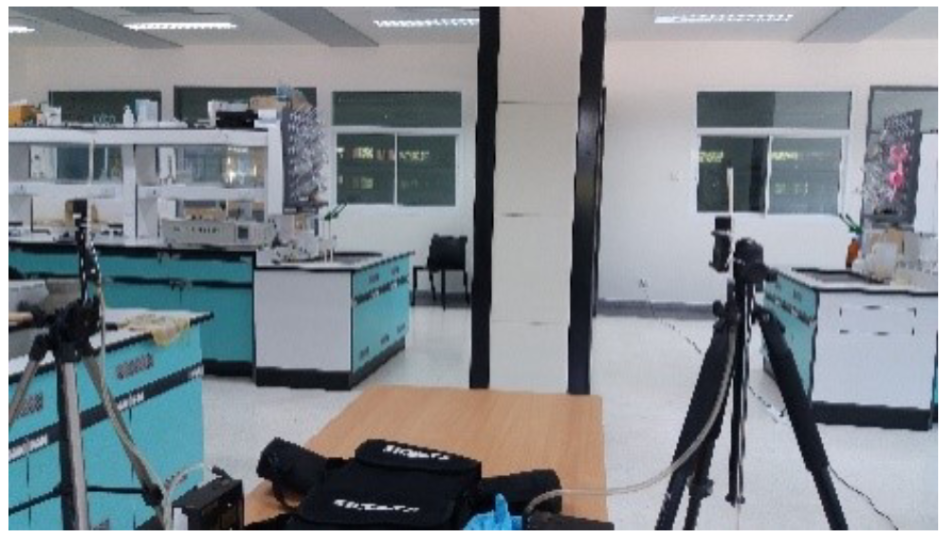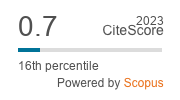BTEX Levels in the Indoor Air of New School Buildings: A Case Study
doi: 10.14456/mijet.2020.4
Keywords:
Indoor air, VOCs, BTEX, Air quality, SchoolAbstract
Volatile organic compounds (VOCs) are a common group of indoor air pollutants. VOCs cause adverse health effects, both short- and long-term to exposed residents. This study investigated the BTEX (benzene, toluene, ethylbenzene, and xylene) levels in the indoor air of the new buildings of Surawiwat School, Nakhon Ratchasima, Thailand. Samples were taken from classrooms, dormitory rooms and laboratory rooms, both new and in-used, from December 2018 to February 2019. The sampling was done biweekly. Two samples were collected in each room at a time, resulting in a total of 12 samples per room. Each BTEX sample was done using two Tenax tubes connected in series with a personal air pump. The air flow rate was equal to 50 mL/min and the duration was 60 minutes. The samples were analyzed by a GC/MS instrument. For most types of gas, the concentration levels of the new rooms were lower than those of the in-used rooms, except for the dormitory rooms. Decreasing trends of BTEX concentrations were found in the classrooms and the new laboratory room, while the in-used dormitory room had near constant concentration levels. The BTEX concentration values found in this study were in the acceptable range Time-weighted Average (TWA) of that defined by NIOSH, OSHA, and Thailand state agency.
References
[2] Rathakheth, M. (2009). Sources and concentrations of volatile organic compounds (VOCs) in Bangkok’s office buildings, Bangkok.
[3] Wolkoff P, Nielsen GD. (2001). Organic compounds in indoor air e their relevance for perceived indoor air quality?, Atmos Environment, vol.35, September 2001, pp. 4407-4417.
[4] Zhu JP, Newhook R, Marro L, Chan CC. (2005). Selected volatile organic compounds in residential air in the city of Ottawa, Canada, Environ Sci Technol, vol.39, May 2005, pp. 3964-3971.
[5] Herbarth, O. and Matysik, S. (2010). Decreasing concentrations of volatile organic compounds (VOC) emitted following home renovations, Indoor Air, vol.20, September 2009, pp.141–146.
[6] Du, Z. Mo, J. Zhang, Y. and Xu, Q. (2014). Benzene, toluene, and xylenes in newly renovated homes and associated health risk in Guangzhou, China, Building and Environment, vol.72, February 2014, pp. 75-81.
[7] Guo, H. Lee, S. Li, W. and Cao, J. (2003). Source characterization of BTEX in indoor microenvironments in Hong Kong, Atmospheric Environment, vol.3, January 2003, pp. 73-82.
[8] Liu, Q. Liu, Y. and Zhang, M. (2013). Personal exposure and source characteristics of carbonyl compounds and BTEXs within homes in Beijing, China, Building and Environment, vol.61, March 2013, pp. 210-216.
[9] Tanasorn, T. Tassanee, P. Daisy, M. et al. (2015). Indoor air assessment, health risks, and their relationship among elderly residents in urban warrens of Bangkok, Thailand, Air Qual Atmos Health, vol.8, November 2014, pp. 603–615.
[10] Teepimon, C. (2014). Benzene and toluene exposure in relation to their health effects among sky-train station guards in bangkok Thailand, Bangkok.
[11] Wassana, L. (2013). Health risk assessment of btex exposure to parking workers at one of parking structure in bangkok Thailand, Bangkok.
[12] Zhengjian, D. Jinhan, M. Yinping, Z. and Qiujian, X. (2014). Benzene, toluene and xylenes in newly renovated homes and associated health risk in Guangzhou, China, Building and
Environment, vol.72, October 2013, pp.75-81.
[13] Zhou, J. You, Y. Bai, Z. Hu, Y. Zhang, J. and Zhang, N. (2011). Health risk assessment of personal inhalation exposure to volatile organic compounds in Tianjin, China. Science of the Total Environment, vol.409, January 2011, pp. 452-459.
[14] U.S. Environmental Protection Agency (U.S.EPA), (1999). Air Monitoring Methods: Toxic Organic Compendium Method TO-17. URL:https://www.epa.gov/ttn/amtic/files/ambient/airtox/to-17r.pdf, access on 25/05/2019
[15] Occupational Safety and Health Administration (OSHA). (2012). Chemical Sampling Information URL: https://www.osha.gov/dts/chemicalsampling/toc/toc_chemsamp.html, access on 25/05/2019
[16] Notification of Ministry of Interior regarding working safety in respect to environmental condition (Chemicals). (1979), Published in the Royal Government Gazette, No. 94 Part 64

Downloads
Published
How to Cite
Issue
Section
License
Copyright (c) 2020 Mahasarakham International Journal of Engineering Technology

This work is licensed under a Creative Commons Attribution-NonCommercial-NoDerivatives 4.0 International License.







